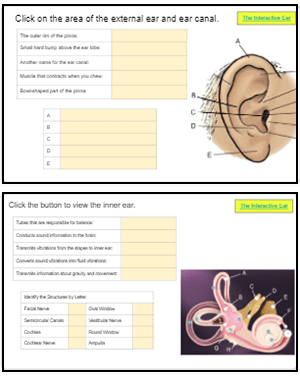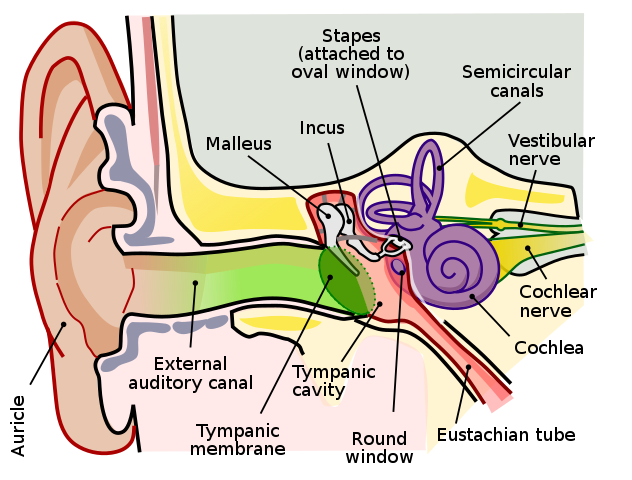
In this activity, students learn about the ear by exploring google slides and going to an interactive site that explores how the ear works.
Students use a simulation called “The Interactive Ear” which guides them though the outer, middle, and inner ear while explaining what each structure does. Students click through the virtual ear to label the diagrams and answer the question on the slides.
The simulation also includes a detailed view of the Organ of Corti and how hair cells within the cochlea perceive sound and pass that information to the brain via the cochlear nerve. I assign this activity as part of a larger unit on the senses.
I also place ear models on their tables during this lesson. That way, students can manipulate a 3D model while they explore the simulation. They are usually surprised by the shape of the cochlea. It really does look like a snail, which is where the name, “cochlea,” comes from.

Not only do students learn how the ear works, they must also learn the structures found in the ear. This includes the cochlea, tympanic membrane, the ossicles (ear bones), and the nerves.
Students can also do the Anatomy of the Ear coloring to reinforce what they have learned.

